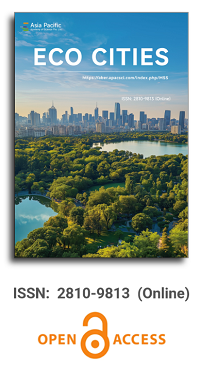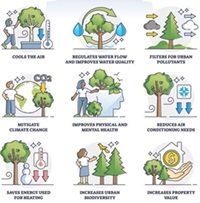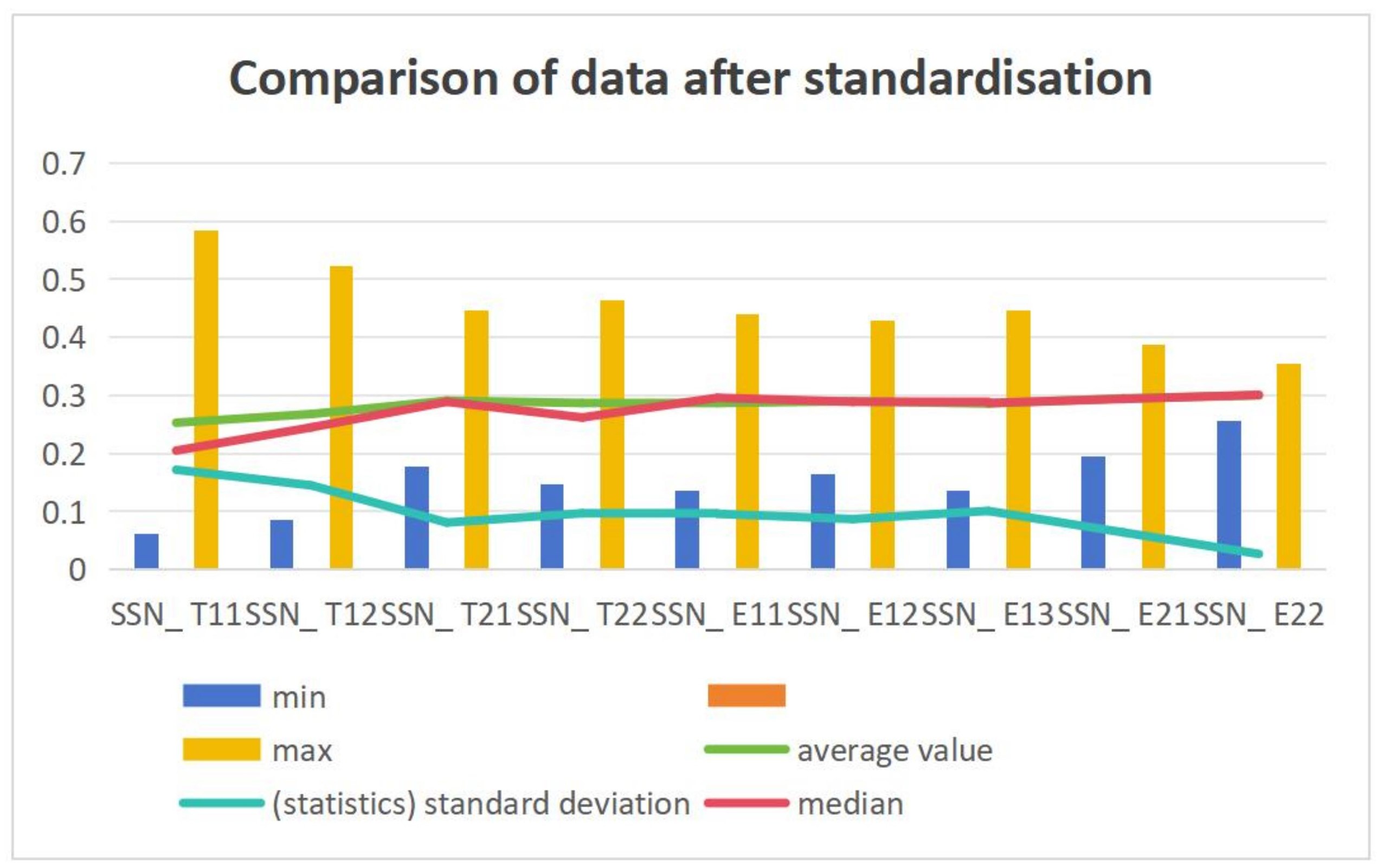


The utilizability of non-flammable R471A with low-GWP in air-conditioning systems
Vol 4, Issue 1, 2023
Download PDF
Abstract
The utilizability of non-flammable refrigerant R471A with low-GWP is theoretically investigated in an air-conditioning system. In this context, R410A, R32, and R471A are compared for the evaporation temperatures of 4, 8, and 12 ℃ with the condenser temperatures of 40 and 50 ℃. The results indicate that both the mass flow rate and power consumption of R471A are higher compared to R410A and R32. Although COP of R471A is determined to be smaller than R410A and R32 by about 19% and 22%, R471A can satisfy the restrictions for air-conditioning systems due to its considerable low-GWP compared to R410A and R32 (GWP of R471A is lower by 78% and 93% in comparison with R32 and R410A, respectively). Hence, it should be possible to suppress global warming through the reduction of carbon emissions as a result of using R471A in these systems. Additionally, since R471A is non-flammable, it can be safely used for systems requiring a high amount of refrigerant charge without violating the restrictions.
Keywords
References
- Tassou SA, Ge Y, Hadawey A, Marriott D. Energy consumption and conservation in food retailing. Applied Thermal Engineering 2011; 31(2–3): 147–156. doi: 10.1016/j.applthermaleng.2010.08.023
- Calm JM. The next generation of refrigerants—Historical review, considerations, and outlook. International Journal of Refrigeration 2008; 31(7): 1123–1133. doi: 10.1016/j.ijrefrig.2008.01.013
- McLinden MO, Kazakov AF, Brown JS, Domanski PA. A thermodynamic analysis of refrigerants: Possibilities and tradeoffs for Low-GWP refrigerants. International Journal of Refrigeration 2014; 38: 80–92. doi: 10.1016/j.ijrefrig.2013.09.032
- Bobbo S, Di Nicola G, Zilio C, et al. Low GWP halocarbon refrigerants: A review of thermophysical properties. International Journal of Refrigeration 2018; 90: 181–201. doi: 10.1016/j.ijrefrig.2018.03.027
- Regulation (EU) No 517/2014 of the European Parliament and of the Council of 16 April 2014 on fluorinated greenhouse gases and repealing Regulation (EC) No 842/2006. Available online: https://eur-lex.europa.eu/legal-content/EN/TXT/PDF/?uri=CELEX:32014R0517&from=EN> (accessed on 14 November 2022).
- Shen B, Ally MR. Energy and exergy analysis of low-global warming potential refrigerants as replacement for R410A in two-speed heat pumps for cold climates. Energies 2020; 13(21): 5666. doi: 10.3390/en13215666
- Qiu J, Zhang H, Sheng J, Wu Z. Experimental investigation of L41b as replacement for R410A in a residential air-source heat pump water heater. Energy and Buildings 2019; 199: 190–196. doi: 10.1016/j.enbuild.2019.06.055
- Al-Sayyab AKS, Navarro-Esbrí J, Barragán-Cervera A, et al. Comprehensive experimental evaluation of R1234yf-based low GWP working fluids for refrigeration and heat pumps. Energy Conversion and Management 2022; 258: 115378. doi: 10.1016/j.enconman.2022.115378
- Yu B, Ouyang H, Junye SH, et al. Evaluation of low-GWP and mildly flammable mixtures as new alternatives for R410A in air-conditioning and heat pump system. International Journal of Refrigeration 2021; 121: 95–104. doi: 10.1016/j.ijrefrig.2020.09.018
- Kim B, Lee SH, Lee D, Kim Y. Performance comparison of heat pumps using low global warming potential refrigerants with optimized heat exchanger designs. Applied Thermal Engineering 2020; 171: 114990. doi: 10.1016/j.applthermaleng.2020.114990
- Halon T, Gil B, Zajaczkowski B. Comparative investigation of low-GWP binary and ternary blends as potential replacements of HFC refrigerants for air conditioning systems. Applied Thermal Engineering 2022; 210: 118354. doi: 10.1016/j.applthermaleng.2022.118354
- Mota-Babiloni A, Makhnatch P. Predictions of European refrigerants place on the market following F-gas regulation restrictions. International Journal of Refrigeration 2021; 127: 101–110. doi: 10.1016/j.ijrefrig.2021.03.005
- Mota-Babiloni A, Navarro-Esbrí J, Makhnatch P, Molés F. Refrigerant R32 as lower GWP working fluid in residential air conditioning systems in Europe and the USA. Renewable and Sustainable Energy Reviews 2017; 80: 1031–1042. doi: 10.1016/j.rser.2017.05.216
- Heredia-Aricapa Y, Belman-Flores JM, Mota-Babiloni A, et al. Overview of low GWP mixtures for the replacement of HFC refrigerants: R134a, R404A and R410A. International Journal of Refrigeration 2020; 111: 113–123. doi: 10.1016/j.ijrefrig.2019.11.012
- Lemmon EW, Huber ML, McLinden MO. NIST Standard Reference Database 23: Reference Fluid Thermodynamic and Transport Properties-REFPROP, Version 9.1. Available online: https://www.nist.gov/publications/nist-standard-reference-database-23-reference-fluid-thermodynamic-and-transport (accessed on 8 November 2022).
- Devecioğlu AG, Oruç V. Drop-in assessment of plug-in R404A refrigeration equipment using low-global warming potential mixtures. International Journal of Low-Carbon Technologies 2022; 17: 991–999. doi: 10.1093/ijlct/ctac078
Supporting Agencies
Copyright (c) 2023 Atilla Gencer Devecioğlu, Vedat Oruç, Tuba Taneli

This work is licensed under a Creative Commons Attribution 4.0 International License.

This site is licensed under a Creative Commons Attribution 4.0 International License (CC BY 4.0).

Chinese Academy of Sciences, China
Indexing & Archiving
Asia Pacific Academy of Science Pte. Ltd. (APACSCI) specializes in international journal publishing. APACSCI adopts the open access publishing model and provides an important communication bridge for academic groups whose interest fields include engineering, technology, medicine, computer, mathematics, agriculture and forestry, and environment.



.jpg)

.jpg)



